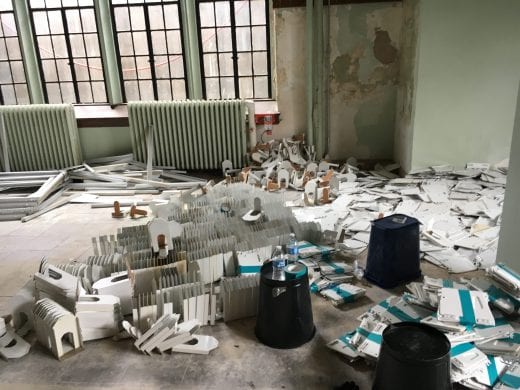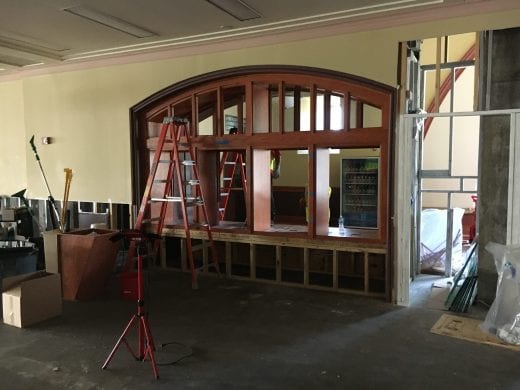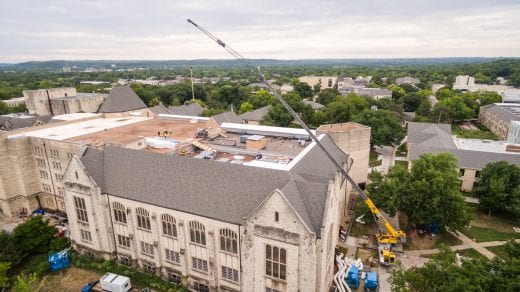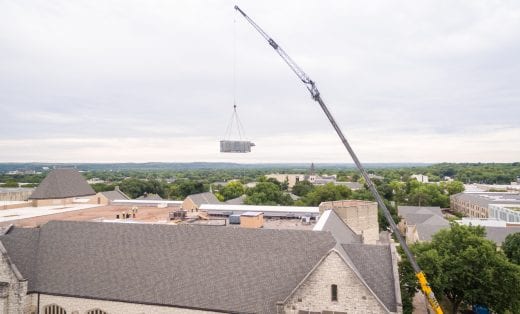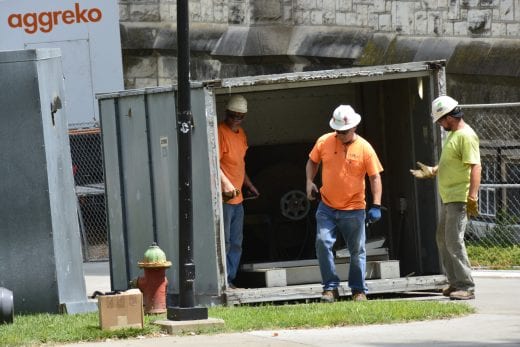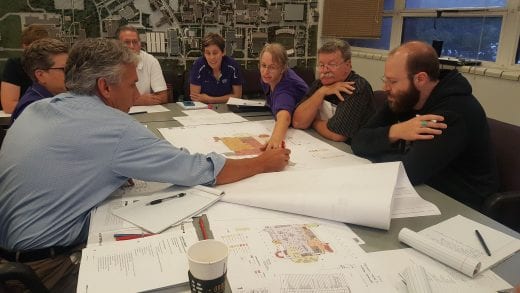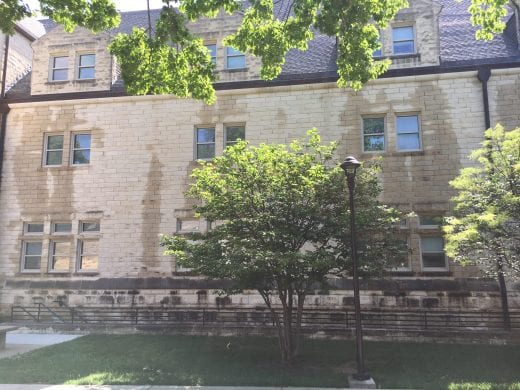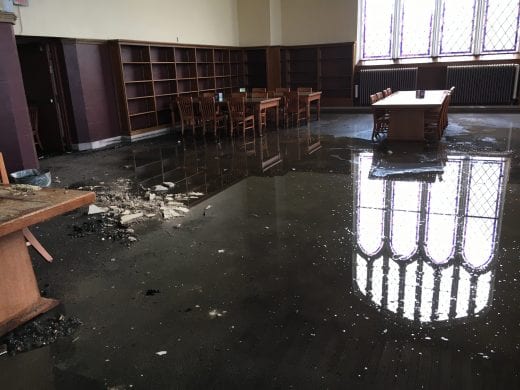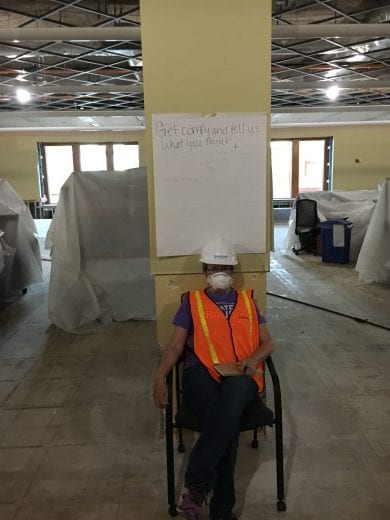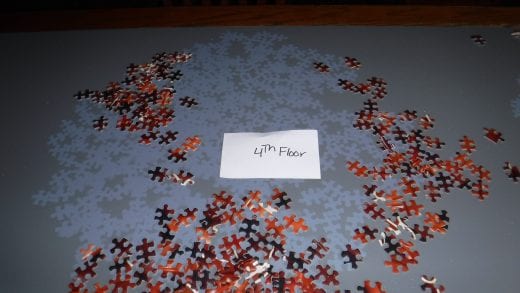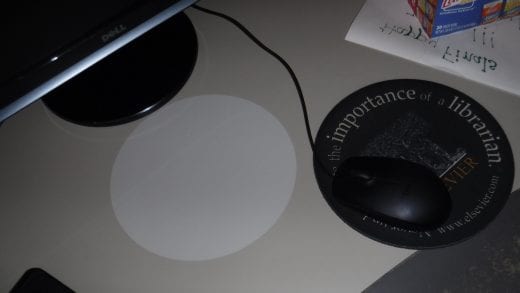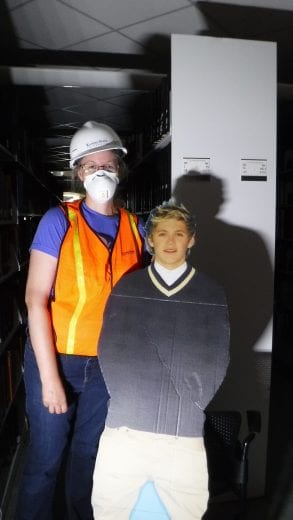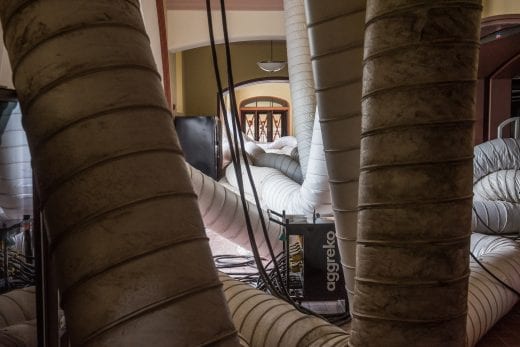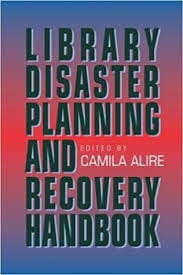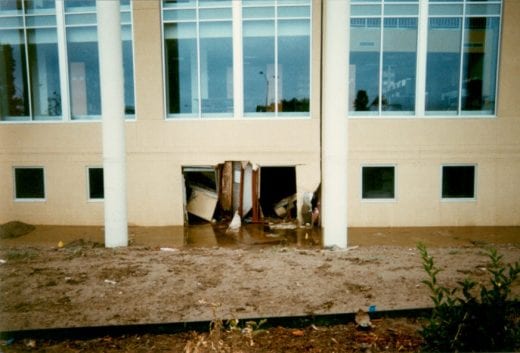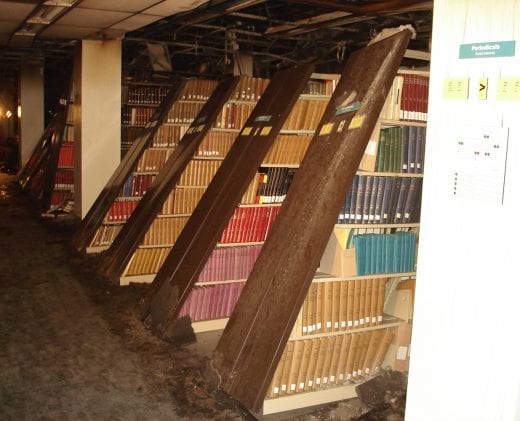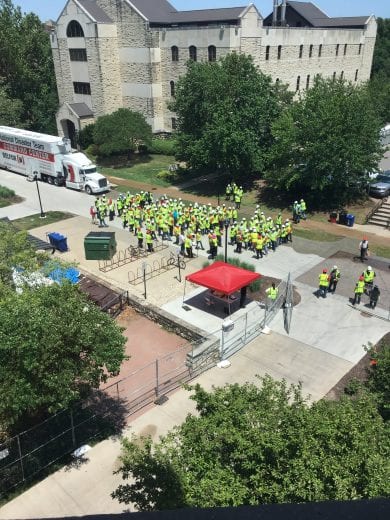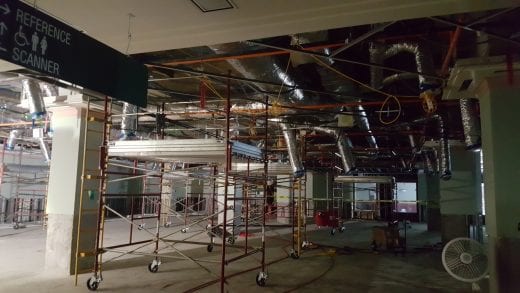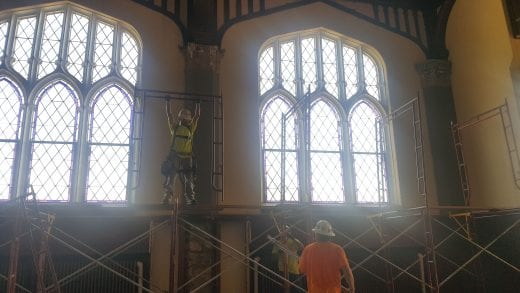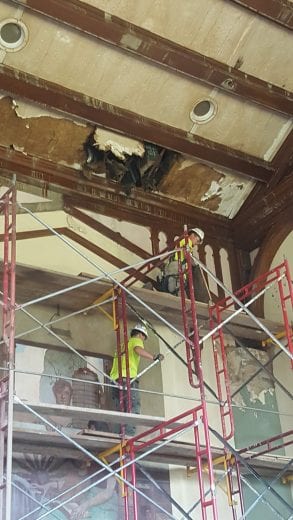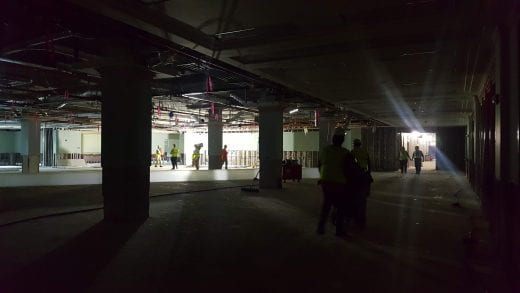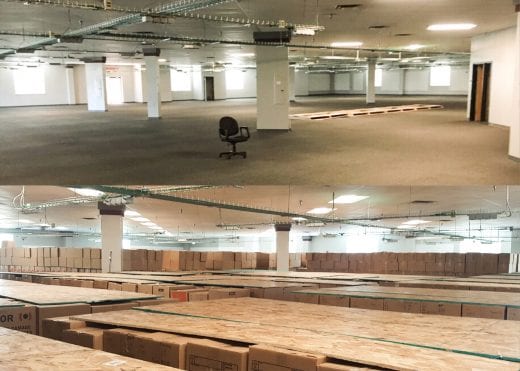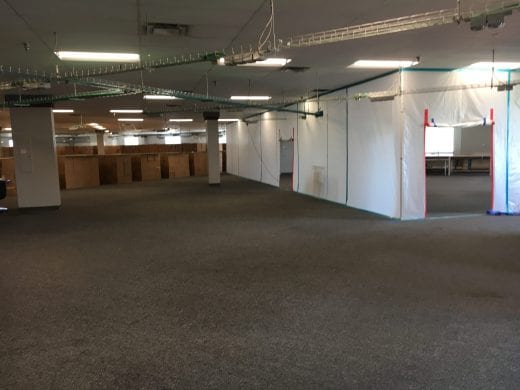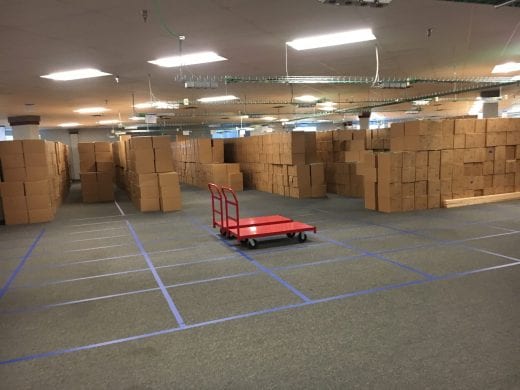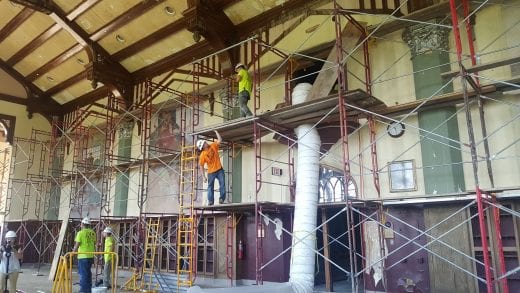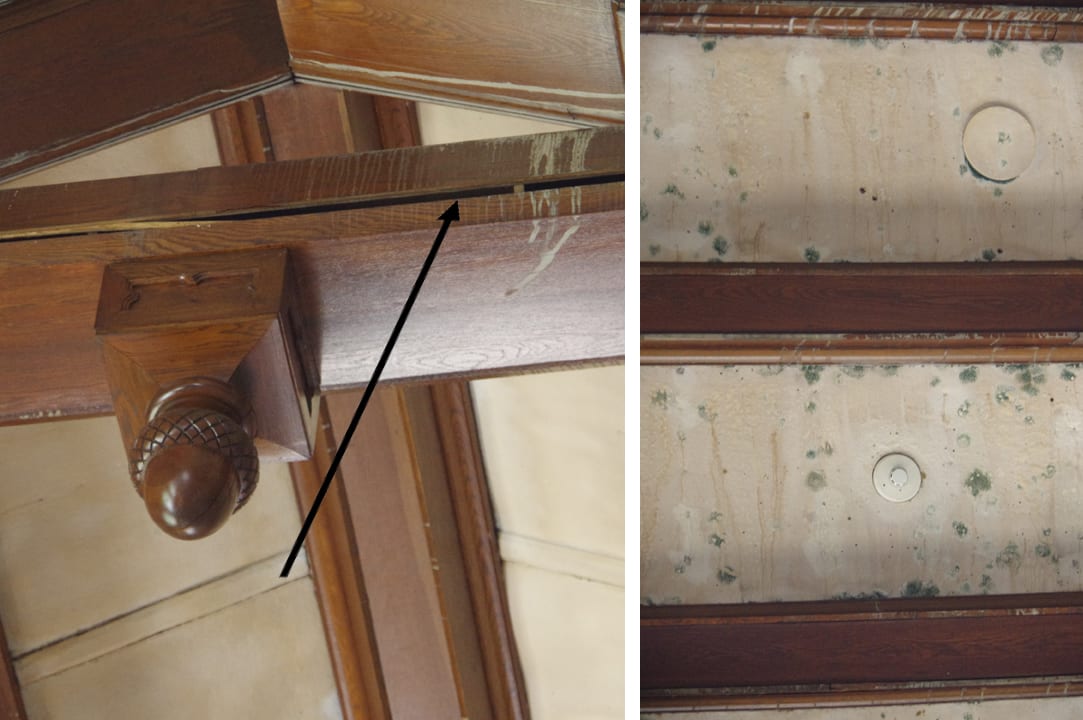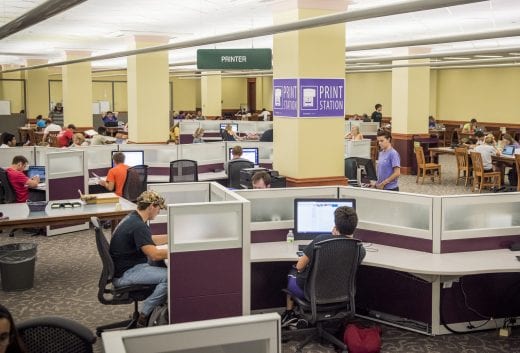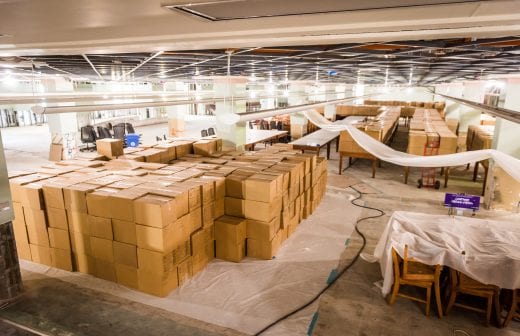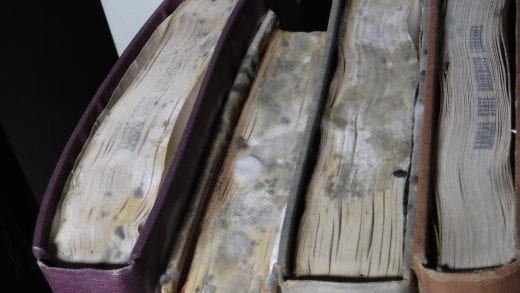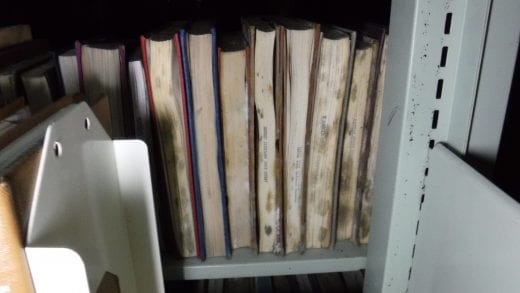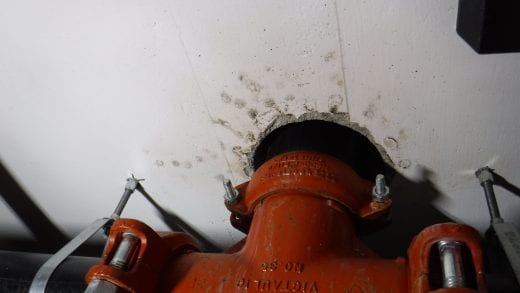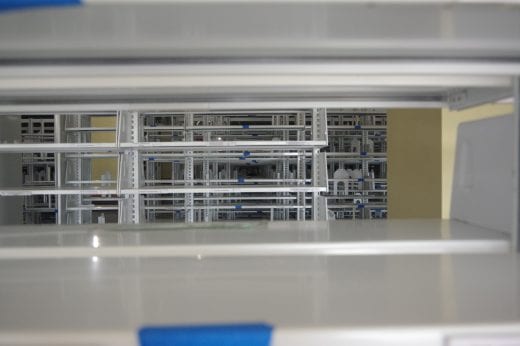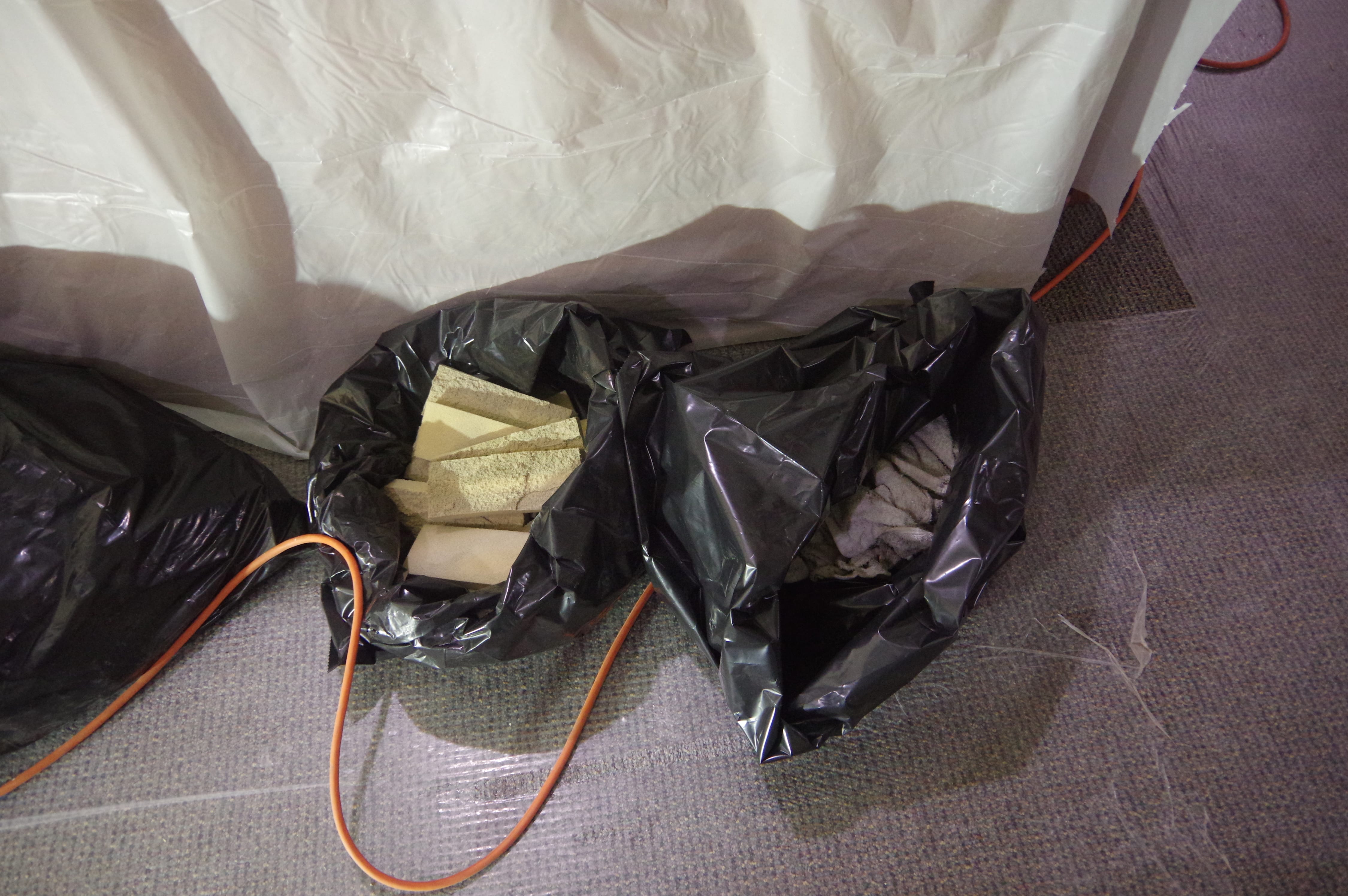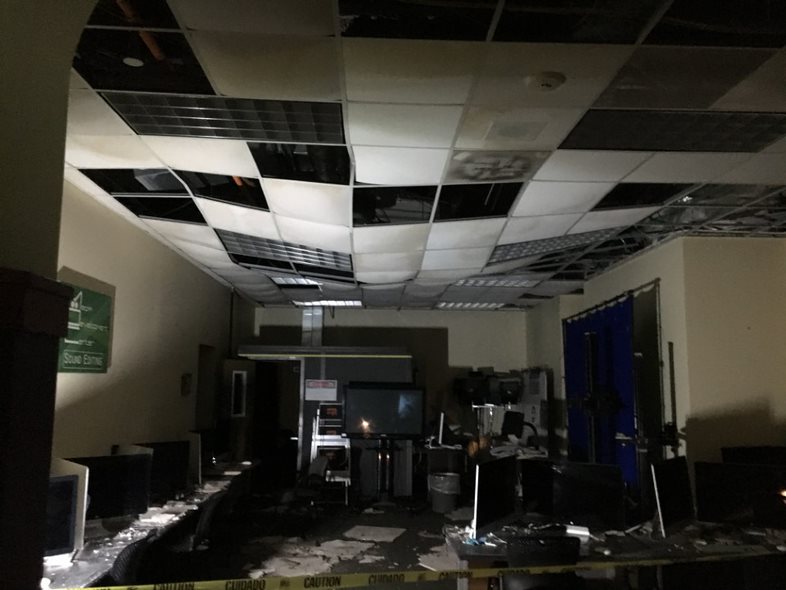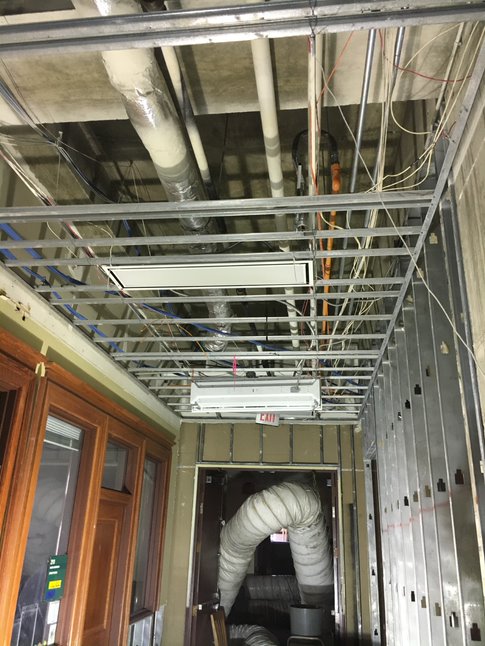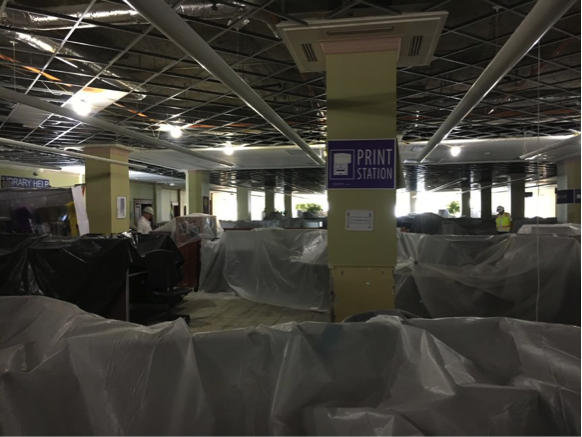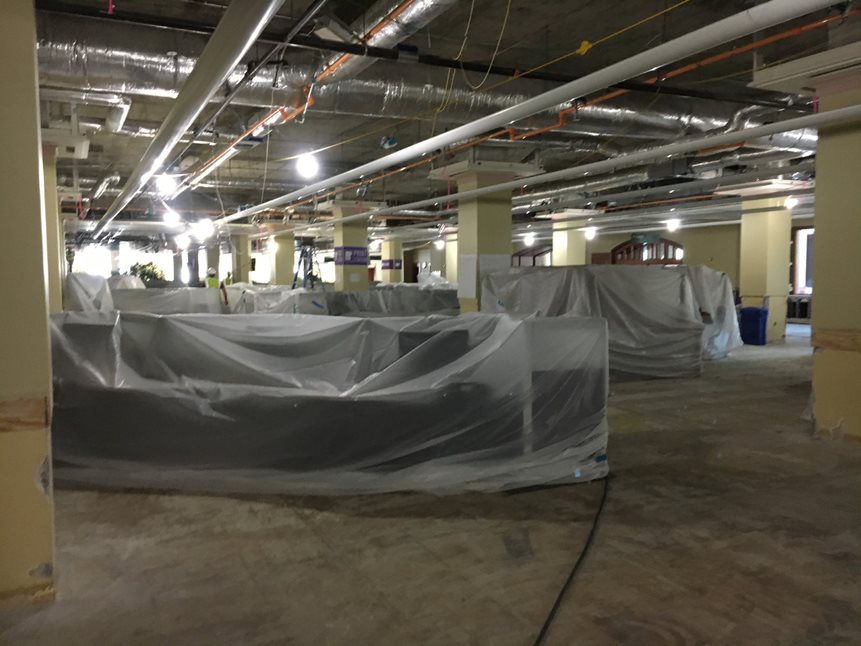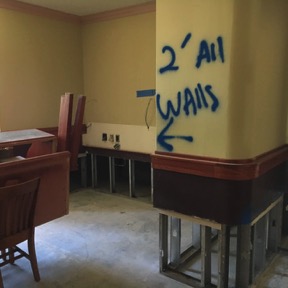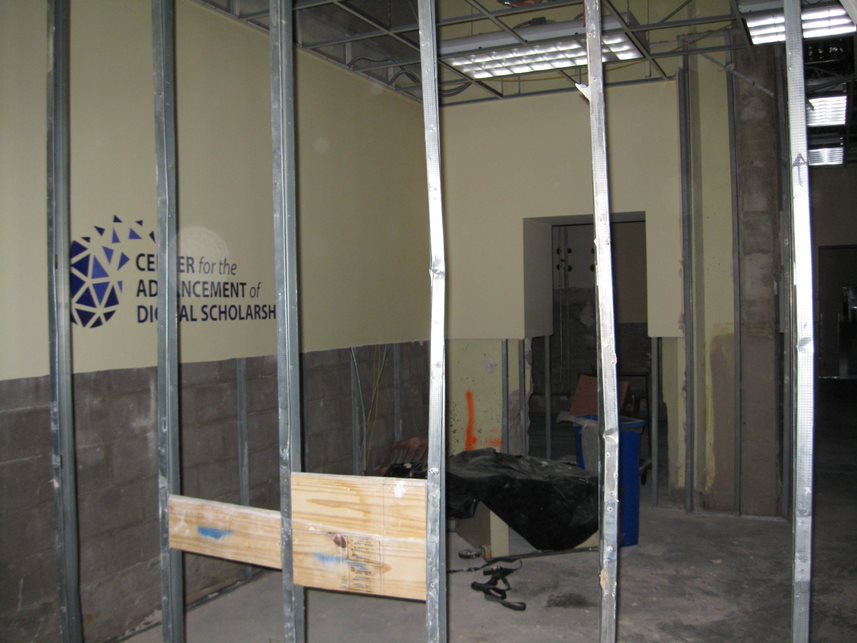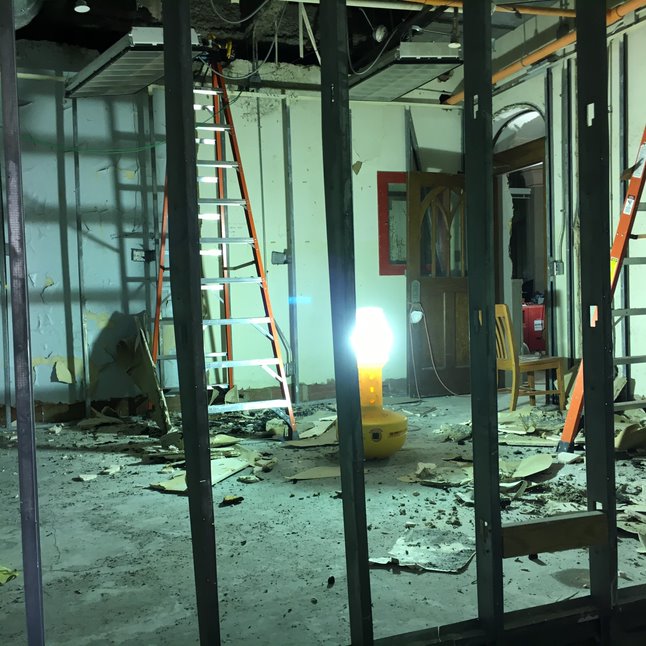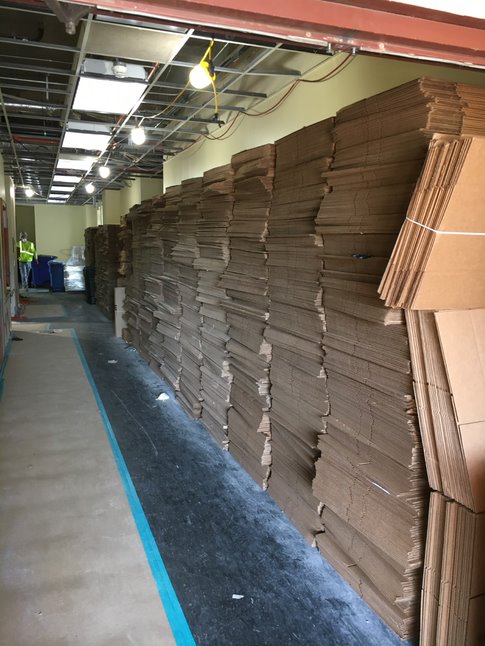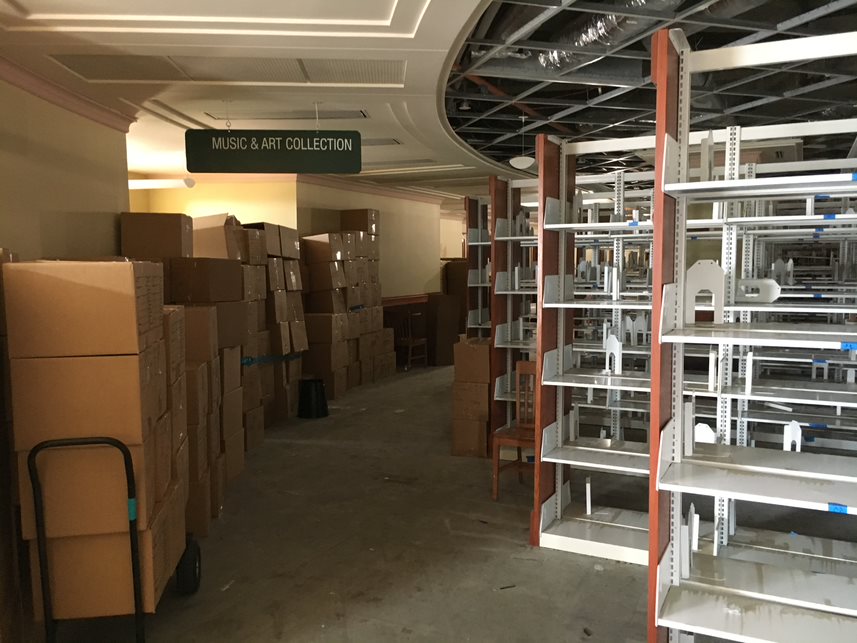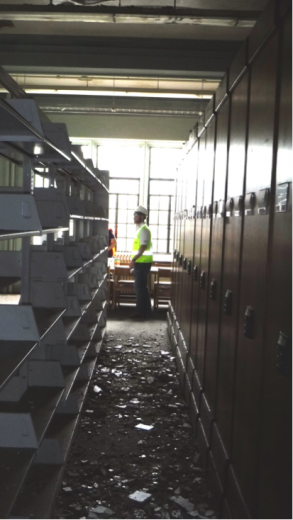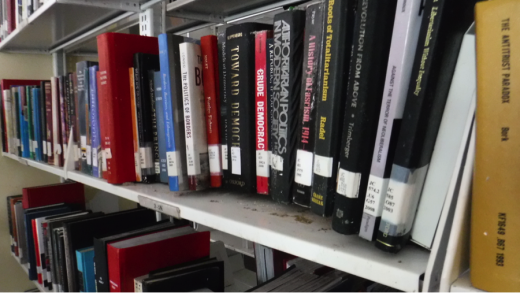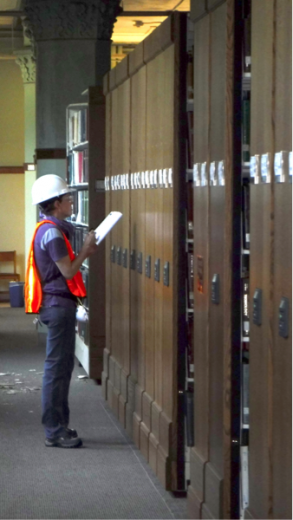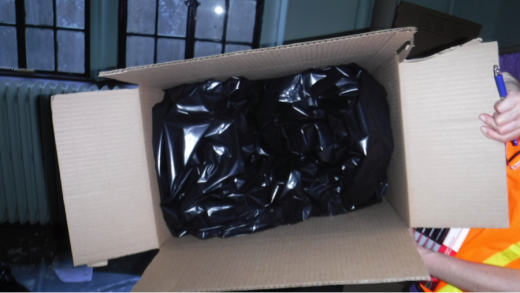As soon as K-State Libraries and Belfor Property Restoration employees were allowed back in Hale Library after the fire, we removed wet books as quickly as possible.
Several weeks ago, we wrote about that process: books were packed out of the building and stored in freezers on campus until they could be shipped in refrigeration trucks to a Belfor facility in Fort Worth, Tex.
Two weeks ago, Kathryn Talbot, preservation coordinator, and Michelle Turvey-Welch, head of metadata, preservation and digital initiatives at K-State Libraries, went down to Fort Worth to check on our materials.
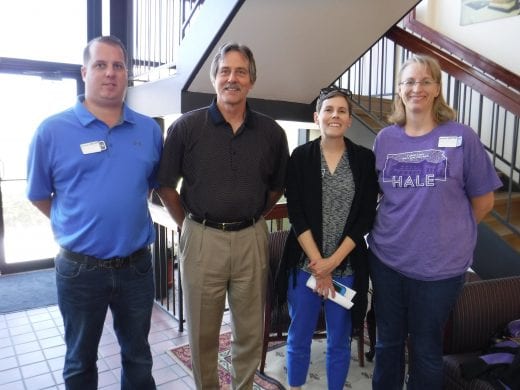
A total of 3,500 boxes of wet books were sent to the Belfor facility. Once they arrived, a two-step process of freeze drying and then cleaning the books began. The boxes stay in the freeze drying chambers for about a week.
Books that come out of the freeze dry chambers with mold on them are gamma radiated to kill the mold spores, and books with pages that dry wavy are pressed flat. After that, all items that are in acceptable condition will be transported back to Manhattan and stored in a leased offsite facility dedicated to clean materials.
“We reviewed the books during our visit,” said Talbot. “We believe that at least 90 percent of the books will come back to Manhattan. Some will be discolored or have wavy pages, but they are still usable. The books that could not be salvaged were those with excessive mold growth on the interior pages.”
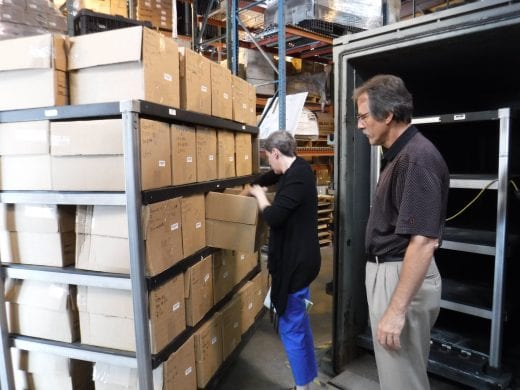
Book Removal
Initially, we hoped that some of the books in Hale Library’s Stacks A-H could be cleaned inside the library. Unfortunately, the temperature and the humidity levels in the building are unreliable. It’s been difficult to ensure the consistent power that’s necessary to run the air conditioning units. As a result, more than 1.5 million items in Hale Library will be removed and cleaned offsite.
We are especially concerned about providing an environment that’s appropriate for materials from the Richard L. D. & Marjorie J. Morse Department of Special Collections. Air conditioning is struggling to reach those items on Stack G and H.
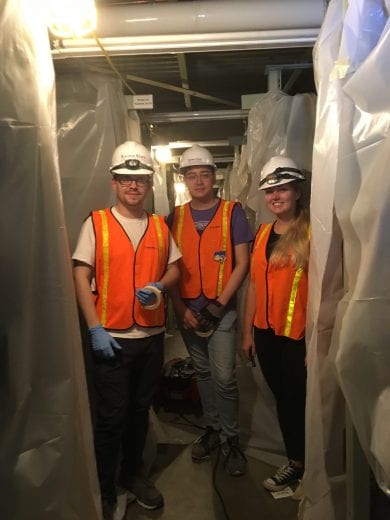
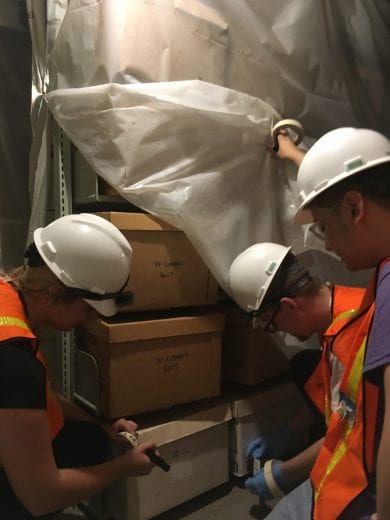
Currently, Stack A has been emptied and Belfor is boxing and moving Stacks B and G. We are hoping to have the all eight stack levels emptied by the beginning of September.
Once those books are removed, they’re sent to offsite warehouse space. K-State Libraries has leased three separate buildings where dirty materials are stored. Executive Court, an office building near the airport that was most recently used by the College of Architecture, Planning & Design during the Seaton Hall renovation, has been filled with more than 68,000 boxes of books.
Since we have tens of thousands of additional boxes to accommodate, we’ve also leased space in the Ag Press building in Manhattan and an entire former lumber yard building on the east edge of Junction City.

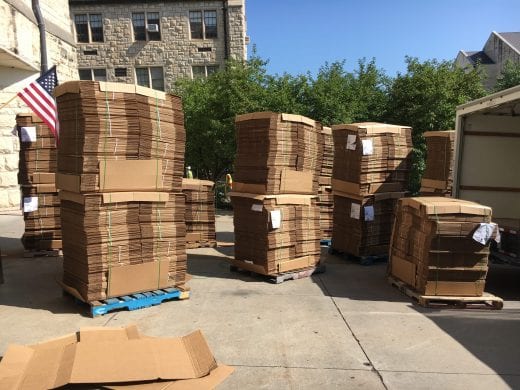
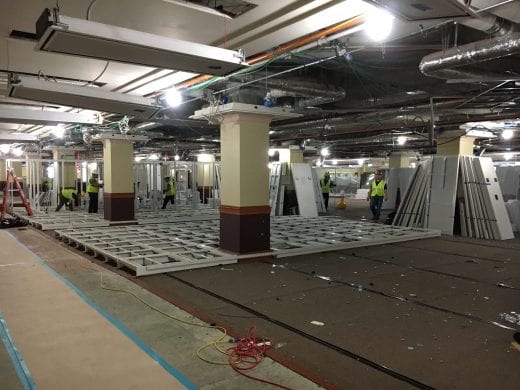

Obviously, most of our collection will be unavailable during the 2018-19 academic year. However, we still have access to hundreds of databases and other online resources. Current periodicals are located in the Math and Physics library. Course reserves are available so students can access textbooks and other materials at Library Help in the Union. Interlibrary Loan is up and ready for requests if we don’t have what you need.
Have questions? Contact us via Ask a Librarian! And again, if you’re looking for help in person, visit Library Help in the Union, which is located across from Radina’s, or stop by one of the other library locations (Math/Physics Library, Weigel Library of Architecture, Planning & Design or Vet Med Library).

